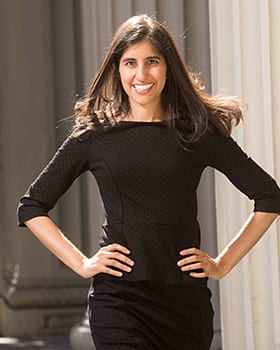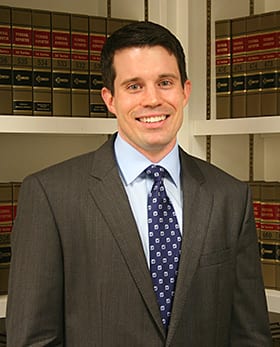
By Jon Jefferson and Andrew Cohen
One day in December, Easha Anand ’14 received a call. She didn’t recognize the number, so she didn’t answer. The ensuing voicemail floored her. “Hey, Easha,” it began, “it’s Sonia Sotomayor. Could you please give me a call at your convenience?”
Anand had interviewed for a clerkship at the U.S. Supreme Court, so the call wasn’t unexpected, but the justice didn’t say whether the news was good or bad. Only when Anand called back, heart pounding, did she learn: She’d gotten an offer.
Anand was astonished; her teachers weren’t. “Easha’s a superstar,” said Professor Amanda Tyler, who co-chairs Berkeley Law’s Clerkship Committee with Assistant Professor Andrew Bradt and Eric Stern, director of operations at the Career Development Office (CDO). “She blazed through law school. She did exceptionally well in her coursework, and she volunteered for a tremendous amount of institutional service— student organizations, clinical work, the Dean Search Committee.”
It wasn’t the first clerkship offer Anand had received. In fact, she was already midway through a 9th Circuit clerkship with Judge Paul Watford, who had strongly backed her for the Sotomayor job.
Anand was in good company, clerkship-wise. Stern says 59 new grads—20 percent of Anand’s class—landed clerkships (immediately after graduation or for future terms) with state or federal judges, including 16 at the 9th Circuit alone. Nearly one-third will be clerking for more than one judge.
The numbers reflect a concerted effort by the CDO and the Clerkship Committee. The task of matching students with clerkships has grown more challenging since 2013, when the Federal Law Clerk Hiring Plan was eliminated, ending uniform application deadlines and selection dates.
Now, said Tyler, “It’s a never-ending, full-throttle institutional push to help our students land these extraordinary opportunities. It’s extremely time-consuming and stressful for the students.”
It’s also challenging for Erin Reynolds’ Faculty Support Unit, which produced more than 11,000 clerkship recommendation letters last year—about 5,500 online submissions and 6,000 letters sent directly to judicial chambers. The efforts are paying off nationwide, with class of 2014 graduates clerking in 29 states, from Maine to Alaska.
As for Anand: When she returned Justice Sotomayor’s call, Anand said she “babbled on and on” about how honored she was to receive the offer. Finally the justice asked wryly, “Does that mean ‘yes?’”
Yes. Anand’s Supreme Court clerkship begins in July.

Anand isn’t the only Berkeley Law graduate to receive a dream phone call from the Supreme Court recently. Greg Miller ’12, who has already worked for three judges, was informed that he will clerk for Justice Antonin Scalia starting in summer 2016.
“Former clerks say their year with the Supreme Court was the most demanding and rewarding of their legal careers,” Miller said. “I expect to work very hard while making a few memories and forming friendships that will last a lifetime.”
Miller clerked for federal district court Judge Amul Thapar ’94 in the Eastern District of Kentucky and externed for Justice Davaid Nahmias of the Georgia Supreme Court while studying for the Texas Bar Exam. He is now clerking for Chief Judge Ed Carnes of the U.S. 11th Circuit Court of Appeals.
“I had the good fortune of having Professor Jesse Choper as a mentor during my time at Berkeley, and he urged me to apply to the Supreme Court,” Miller said. “Judge Thapar was also very supportive.”